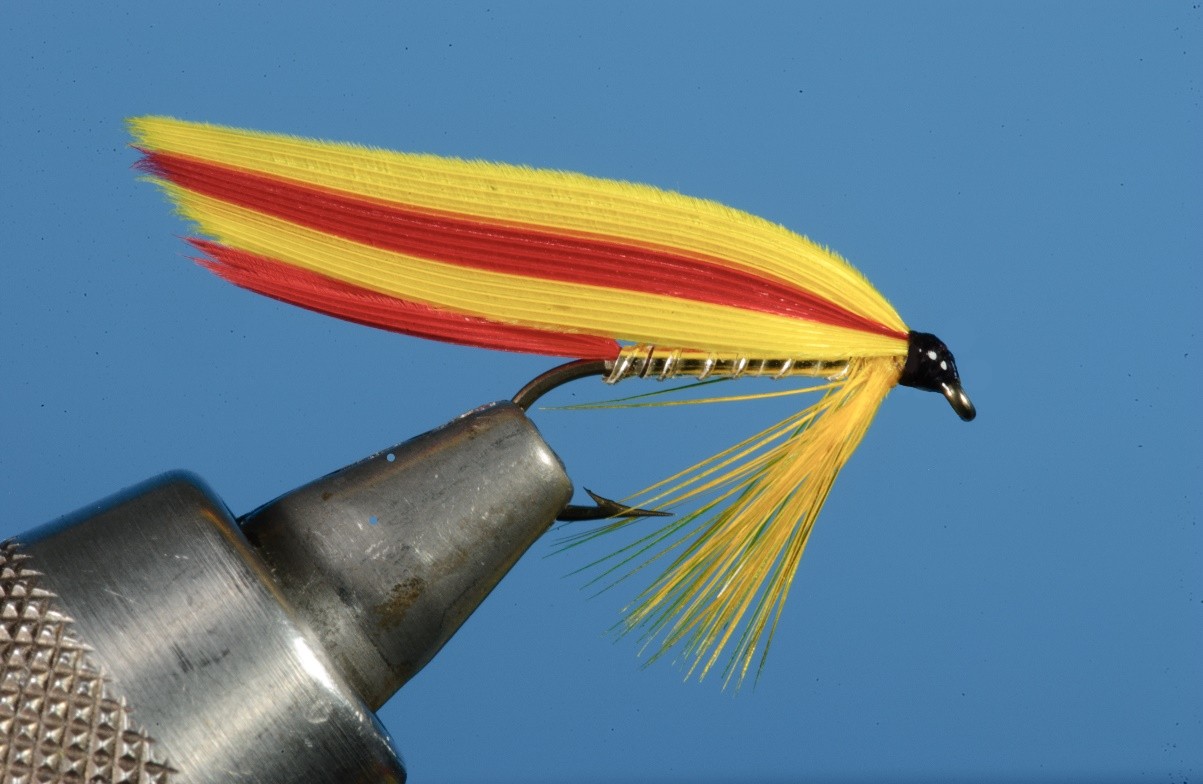Married Wing Mickey Fin

Edition:December 2025
Written by: Eric Austin
Photographed By: Eric Austin
Creator: John Alden Knight
The Mickey Fin was a bucktail streamer popularized by author John Alden Knight in the '30s. It was not original to him, and versions of the fly had existed for years. However, it soon became all the rage as a brook trout staple. Joe Bates, in his book Streamer Fly Tying and Fishing from 1950 shows this version of the fly, done with wings fashioned from goose quill rather than bucktail. It can be considered a Canadian fly, as the one tied for the book was done in Montreal by Fin, Fur and Feather Limited, a Canadian tackle dealer. I find these quill feather wings to be a lot of fun to tie, and hope that you will too.
Download PDF Version
MATERIALS
Hook: A smaller streamer hook, #12 Mustad
9671 used here
Tail: Red Goose or Swan quill segments, cut from left and right feathers
Ribs: Oval silver tinsel (small)
Body: Flat Silver tinsel (medium)
Throat: A yellow hackle tied in as a beard
Wings: Two wings, one made of slips cut from left quill feathers, the other from right quill feathers, each wing containing a strip of yellow goose quill top and bottom each married to a red strip in the center
Head: Black